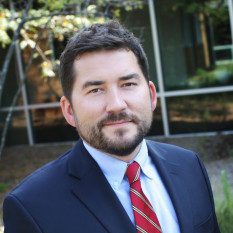In Four Dimensionalism, Ted Sider briefly presents an argument against three-dimensionalism from the metaphysical possibility of time travel.
Time Travel Argument Against Three Dimensionalism
- If time travel is metaphysically possible and three dimensionalism is true, then it is metaphysically possible for a person to be wholly located in two different places at the same time.
- It is not metaphysically possible for a person to be wholly located in two different places at the same time.
- Therefore, it’s not true that time travel is metaphysically possible and three dimensionalism is true.
- Time travel is metaphysically possible.
- Therefore, three dimensionalism is not true.
One option for the three-dimensionalist is to reject (2). I don’t want to get into that (just yet). In this post, I simply want to note something odd about Sider’s response to another possible three dimensionalist reply.
The three dimensionalist could reject (4). In fact, they could reject (4), precisely because they recognize the same (apparent) incompatibility between three dimensionalism and the metaphysical possibility of time travel that Sider exploits.
Sider passes the buck to David Lewis’ Paradoxes of Time Travel defense of the metaphysical possibility of time travel. However, there is something dialectically odd about this move. Doesn’t Lewis explicitly assume four-dimensionalism in his defense?
I’ve got some more thoughts on the option to reject (2) – but I need to get back to grading.
UPDATE: Here’s the passage from the beginning of paradoxes of time travel that I had in mind.
The world – the time traveler’s world, or ours – is a four-dimensional manifold of events. Times is one dimension of the four…Enduring things are like timelike streaks: wholes composed of temporal parts, or stages, located at various times and places. Change is qualitative difference between different stages – different temporal parts – of some enduring things, just as a “change” in scenery from east to west is a qualitative difference between the eastern and western spatial parts of the landscape. If this paper should change your mind about the possibility of time travel, there will be a difference in opinion between two different temporal parts of you, the stage that started reading and the subsequent stage that finishes. (p.68-69)

I am not sure I remember this paper correctly, but David Lewis might not assume Four-Dimensionalism. I know he introduces the notion of a ‘world line’ but, this notion might be consistent with 3Dism. In any case, I would have to look at the paper again to figure out whether or not he assumes 4Dism.
Joshua
Hey Joshua,
I just went back and looked over the paper. Here’s the passage I was thinking of.
The world – the time traveler’s world, or ours – is a four-dimensional manifold of events. Times is one dimension of the four…Enduring things are like timelike streaks: wholes composed of temporal parts, or stages, located at various times and places. Change is qualitative difference between different stages – different temporal parts – of some enduring things, just as a “change” in scenery from east to west is a qualitative difference between the eastern and western spatial parts of the landscape. If this paper should change your mind about the possibility of time travel, there will be a difference in opinion between two different temporal parts of you, the stage that started reading and the subsequent stage that finishes. (p.68-69)
Yes, Lewis is definitely assuming 4Dism here.
I wonder whether Sider could say this. There are several paradoxes of time travel that Lewis addresses in his paper. Some of these merely bring forth central areas of dispute between the 3dist and the 4dist. The paradox being addressed on pages 68-69 is one such paradox. But, others are independent of the central areas of dispute between the 3Dist and the 4Dist. Moreover, Lewis has given plausible responses to these latter paradoxes. So, there is no reason to believe that time travel is impossible other than those reasons which are already playing a central part in the dispute between a 3Dist and a 4Dist. This, I think, is enough to get the disputants into a kind of stalemate over premise (4).
Sider might add that Lewis helps his readers to robustly conceive of time travel and thus helps his readers to see that it is possible. This is less plausible, but if it is true, then it might edge the reader closer to affirming (4) than denying (4).
Joshua